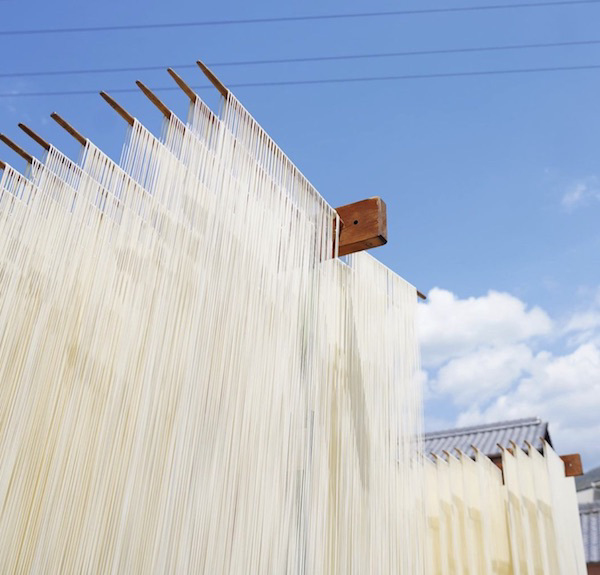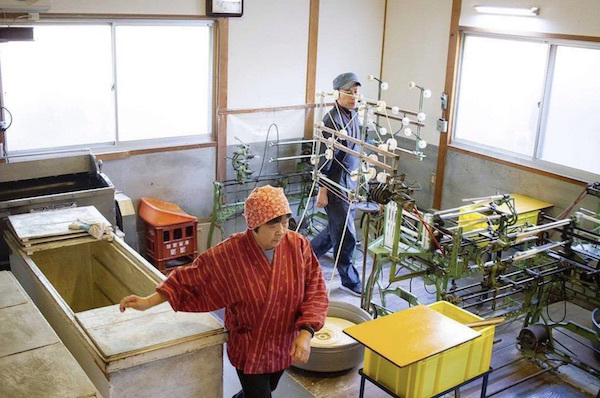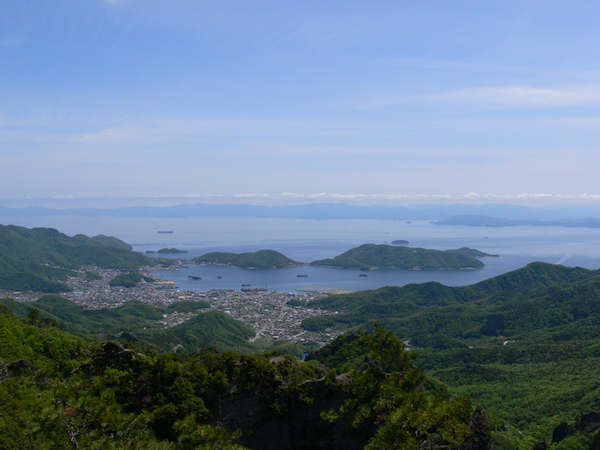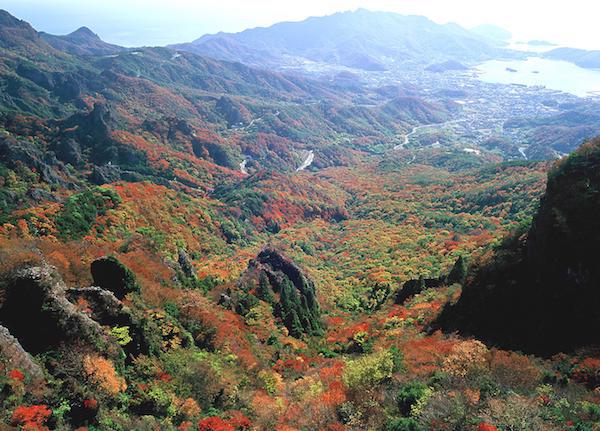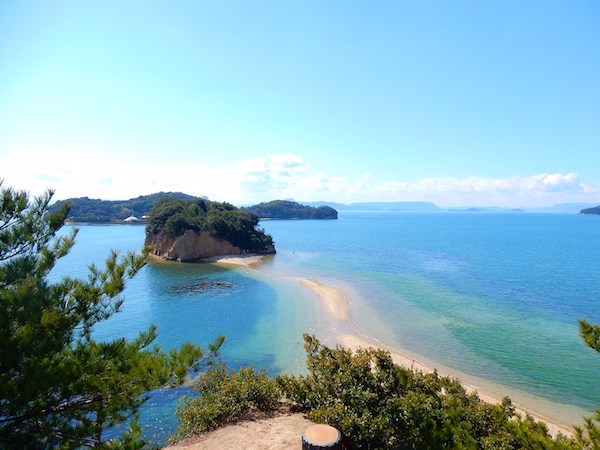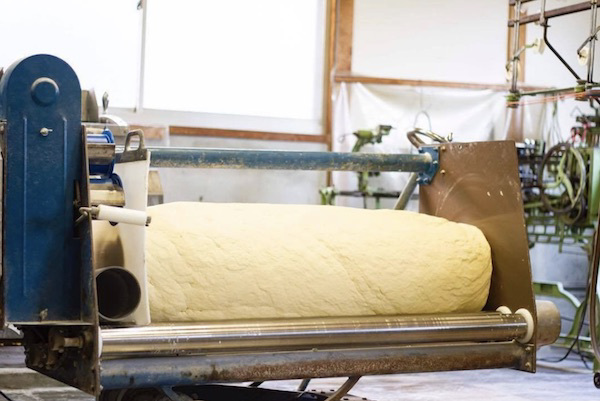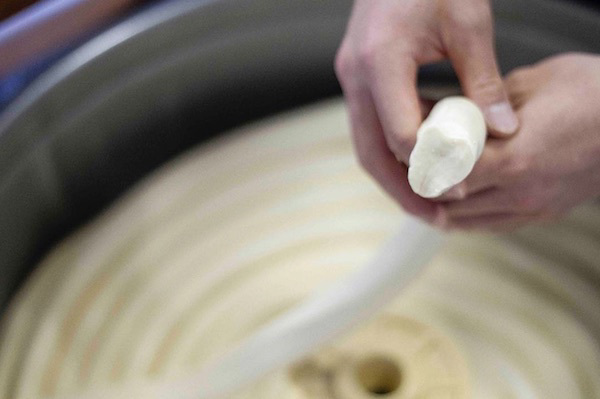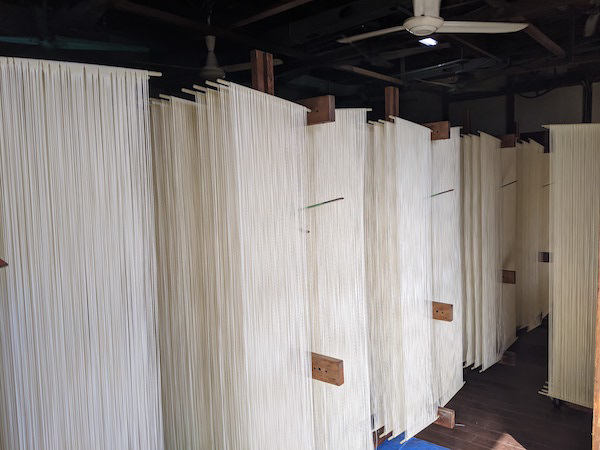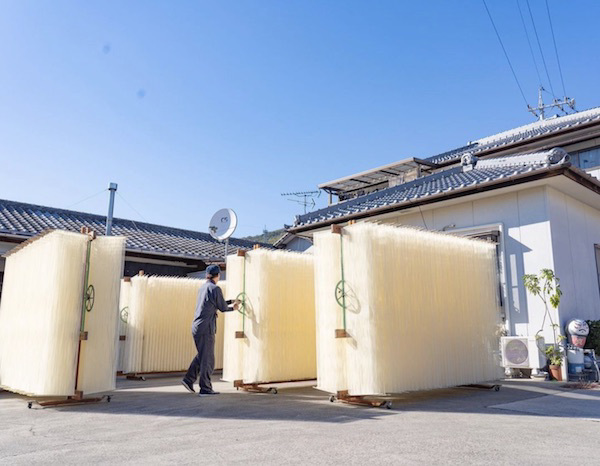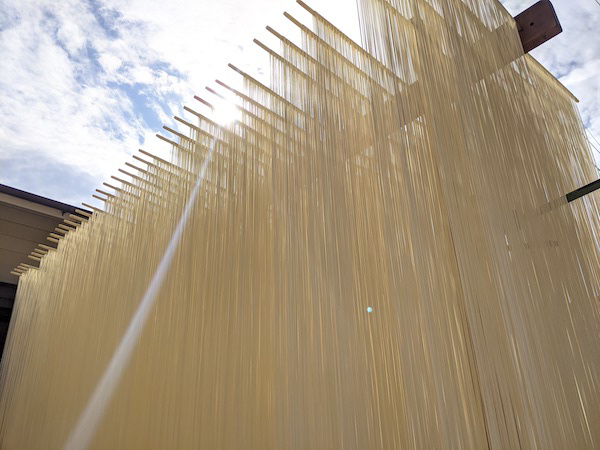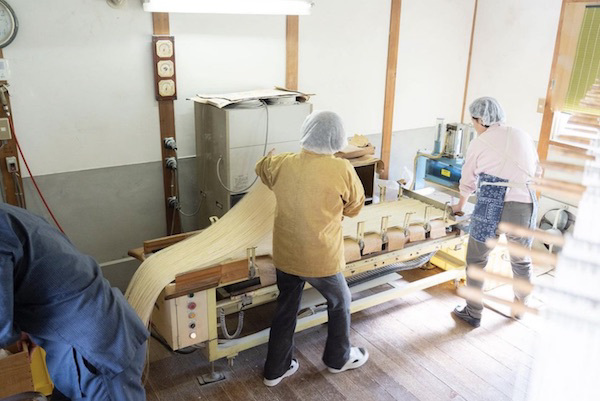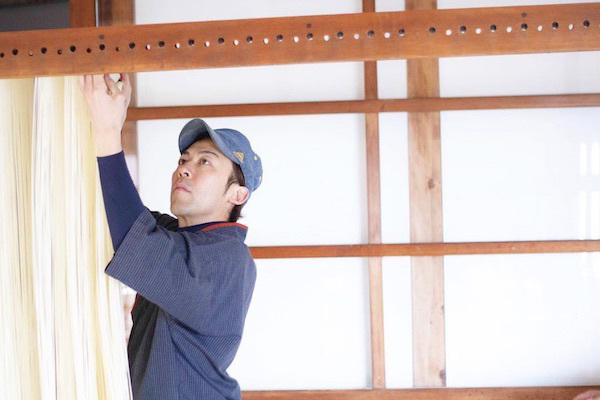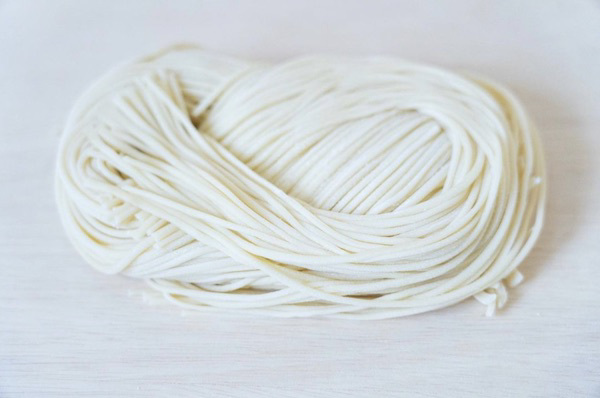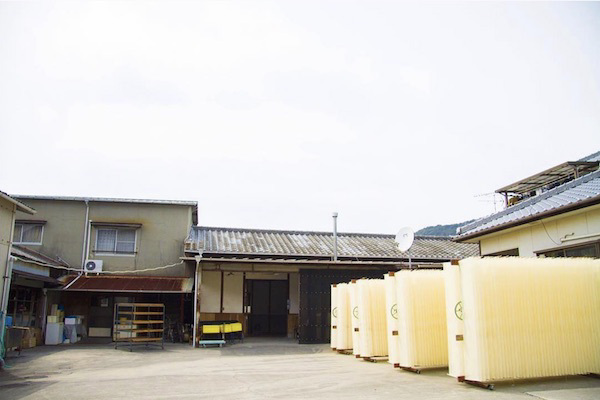November to March is peak season for sun-dried somen noodles
During winter on Shodoshima Island, delicate white curtains appear all over Kagawa Prefecture, swaying in the breeze.
These so-called curtains are actually hand-stretched somen noodles,
which have been made here on Shodoshima Island for the past 400 years.
The sun’s rays make the delicate noodles even whiter and more delicious, and just watching them seems to make time stand still.
Located in the Ikeda district to the center of the island, the Marukatsu Noodle Factory has been the home of noodle making since the Meiji era.
The current owner is the sixth generation of this family-run business, and together with his mother and two other employees,
these handmade noodles are made by just four people.
Shodoshima, a beautiful island in the Seto Inland Sea
Floating in the Seto Inland Sea, Shodoshima Island’s specialty is actually olives, accounting for around 90% of Japan’s total olive production.
© Shodoshima Tourism Association
Covering roughly 170 km2, it’s the second largest island in this area and has a population of around 28,000 people.
Accessible by ferry, it’s either 70 minutes from Shin-Okayama Port in Okayama, or 60 minutes from Takamatsu Port in Shikoku.
You can also get there in 35 minutes by speed boat.
Main attractions include the autumn leaves of the Kankakei Ropeway, and the Angel Road,
a sandy path that appears twice a day connecting the main island to another smaller one.
Kankakei Ropeway:
© Shodoshima Tourism Association
Angel Road:
© Shodoshima Tourism Association
There’s also the charming townscape of Hishio no Sato, but the one sight that you should definitely see is the making of somen noodles during winter.
The hand-stretched somen noodles of Shodoshima Island
In Japan, there are three main types of somen noodles; Miwa somen from Nara Prefecture, Banshu somen from Hyogo Prefecture,
and Shodoshima somen from Kagawa Prefecture.
Somen noodles are made using wheat flour.
Although udon noodles are made using the same type of flour, the dough is kneaded, stretched and cut.
On the other hand, somen noodles are made solely by stretching the dough into thin pieces.
The history of Shodoshima somen noodles dates back about 400 years.
Apparently, residents of Shodoshima went to visit Ise Jingu Shrine in Mie Prefecture, passing through Nara.
On their way, they enjoyed the Miwa somen noodles so much that they took the recipe back home.
Making traditional Shodoshima somen noodles
At the Marukatsu Noodle
Factory, the process begins at 5am.
First, they make the dough by mixing together flour, water and salt.
The amount of salt needs to be adjusted depending on the weather and temperature, and knowing how much requires great skill.
The dough is then rolled out to a thickness of 10cm before being stretched and folded 5-6 times.
This means that one noodle is made from a bundle of 10 or 12 doughs, which is the secret to making Shodoshima somen.
After that, they apply sesame oil—another Shodoshima specialty—to help stretch the dough into thin strips about 2cm thick.
During this stage of the process, the once flat dough becomes a round cylinder.
This is put on an automatic winding machine that twists the dough while stretching it even thinner.
At this point in the process, it’s about 4mm thick.
The dough is hung between two rods in a figure of eight.
After it has matured for about 2 hours, it gets stretched 50 cm and left to mature again.
Once this stage is complete, the dough is hung on a special drying rack and is now 0.8mm thin.
The noodles are left to dry inside a dark building for about an hour before being taken outside to dry in the sunlight.
Sun-dried noodles need to be exposed to the sun and wind.
The sunlight bleaches the noodles, making them whiter and more delicious while the wind dries them out.
During this stage, the noodles are turned to make sure they get even exposure to the wind and sun.
If they dry out too much in the wind, they become brittle and snap.
It takes about 30 minutes to 1 hour to loosen the tension of the noodles and dry them, and this needs to be done with great care.
The noodles look beautiful as they dry out under the sun, delicately swaying in the wind.
They look like they should be making a sound, but they are completely silent.
After drying out in the sun, they are left indoors to dry for another 2 hours.
They are then cut into pieces 19cm long and bundled up.
Where can I buy some?
This is a very time-consuming process that requires a lot of effort,
which means they cost more than the average noodles you find at the supermarkets and convenience stores.
At 2,980 yen for a pack of 38 noodles, they are more than double the price.
However, their unique flavor is exquisite.
Unlike other noodles that you can find anywhere, these have a springy texture that slides right down, and they taste delicious.
They will completely change your view on what somen should be like, and you might even wonder what you’ve been eating all these years!
Recommended dish: Maboroshi no nama somen
One dish you should definitely try from the Marukatsu Noodle Factory is their ‘nama somen’, or fresh somen.
Although we typically think of somen noodles in their dried form, you can also try them fresh before they undergo the drying process.
This is what somen noodle producers used to eat for lunch every day in order to check the quality of their noodles.
Since they haven’t been dried, they do have a shorter shelf life which meant that people from outside the area couldn’t try them.
However, the Marukatsu Noodle Factory have come up with a packaging and delivery solution which means their fresh somen are now available for mail order.
We tried their nama somen while visiting their work site, and they were chewy, springy and smooth.
The smell of the flour was also very fragrant, and they were the most delicious somen noodles we have ever tried.
It’s no exaggeration to say that this has completely changed our perception of noodles.
Head to Shodoshima Island and while you take in the beautiful sights of the somen drying, make sure to have a taste of these specialty noodles.
Things to remember when visiting
Many of the somen producers on Shodoshima Island, including the Marukatsu Noodle Factory, are run by families who make small batches.
Visitors are welcome, but please do not disturb their work.
Elsewhere on the island, you can head to
Kitchen UCHINKU for lunch and try their green curry noodle dish, made with somen from Marukatsu.
 JAPAN Travel Concierge
JAPAN Travel Concierge